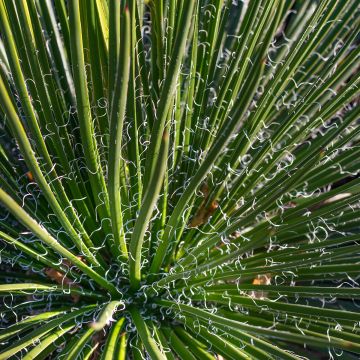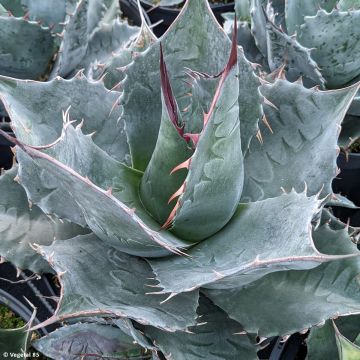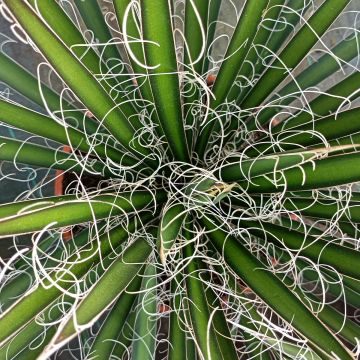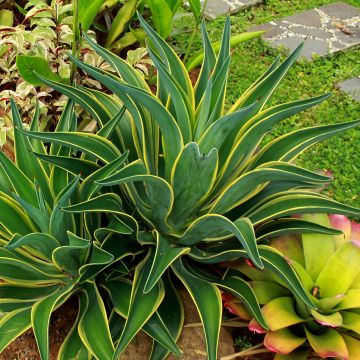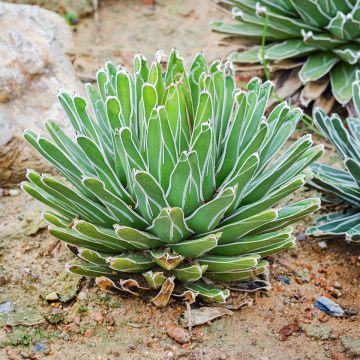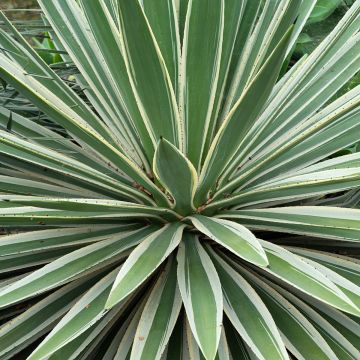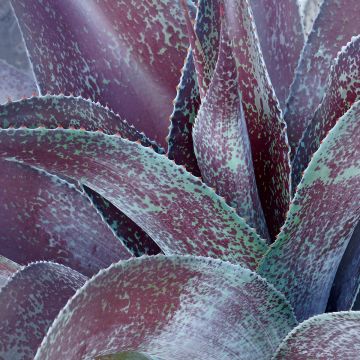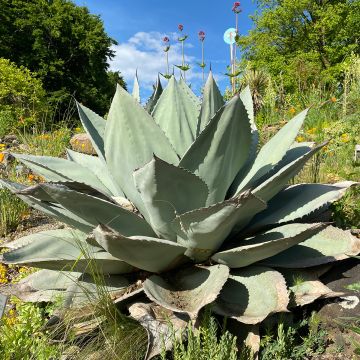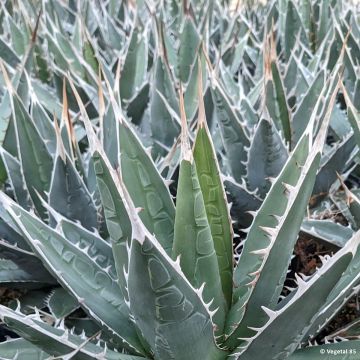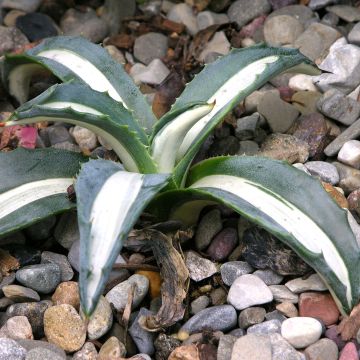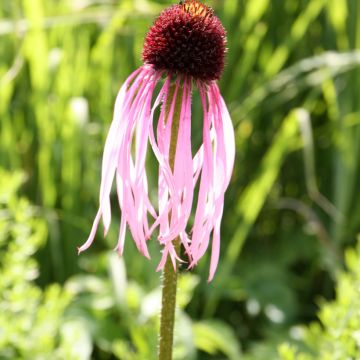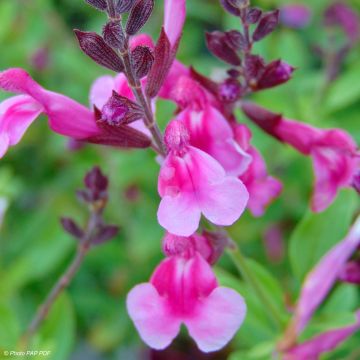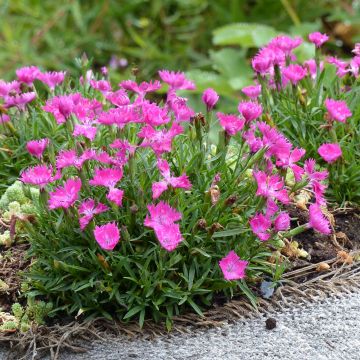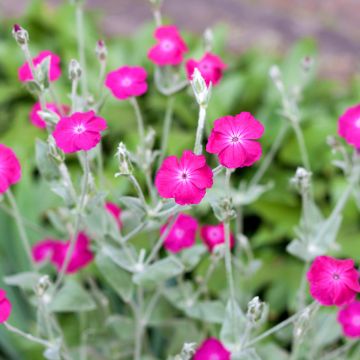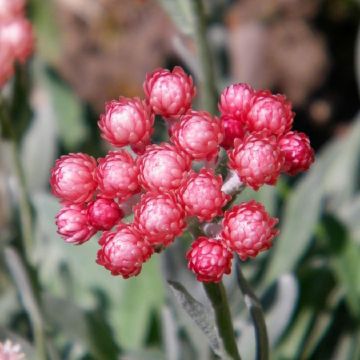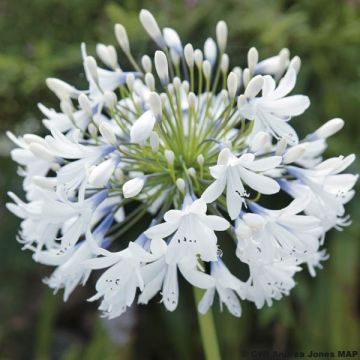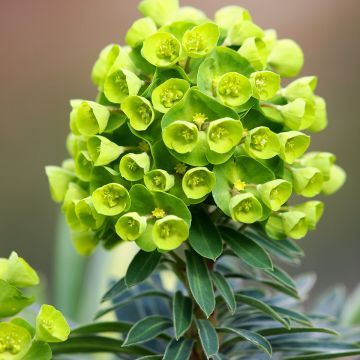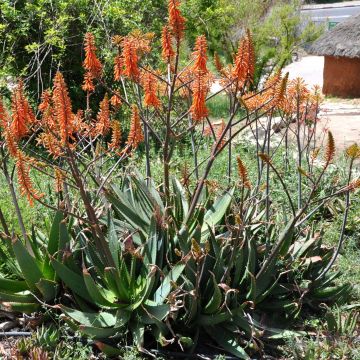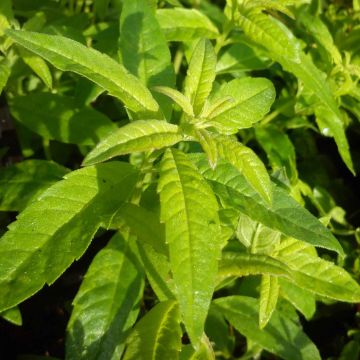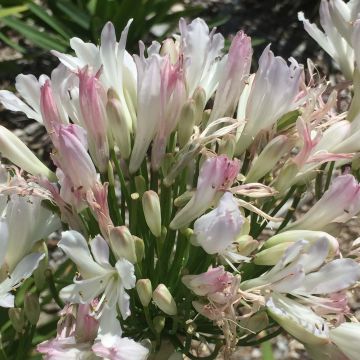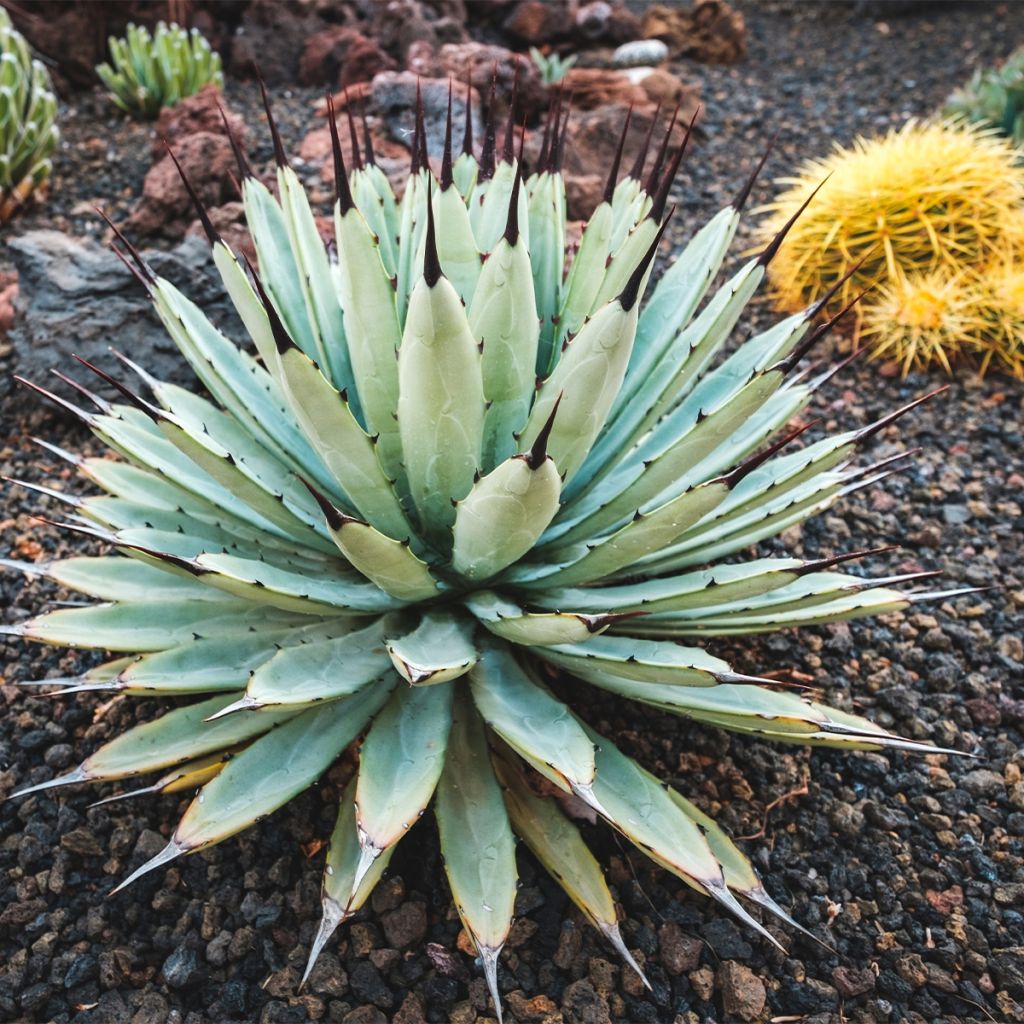

Agave macroacantha
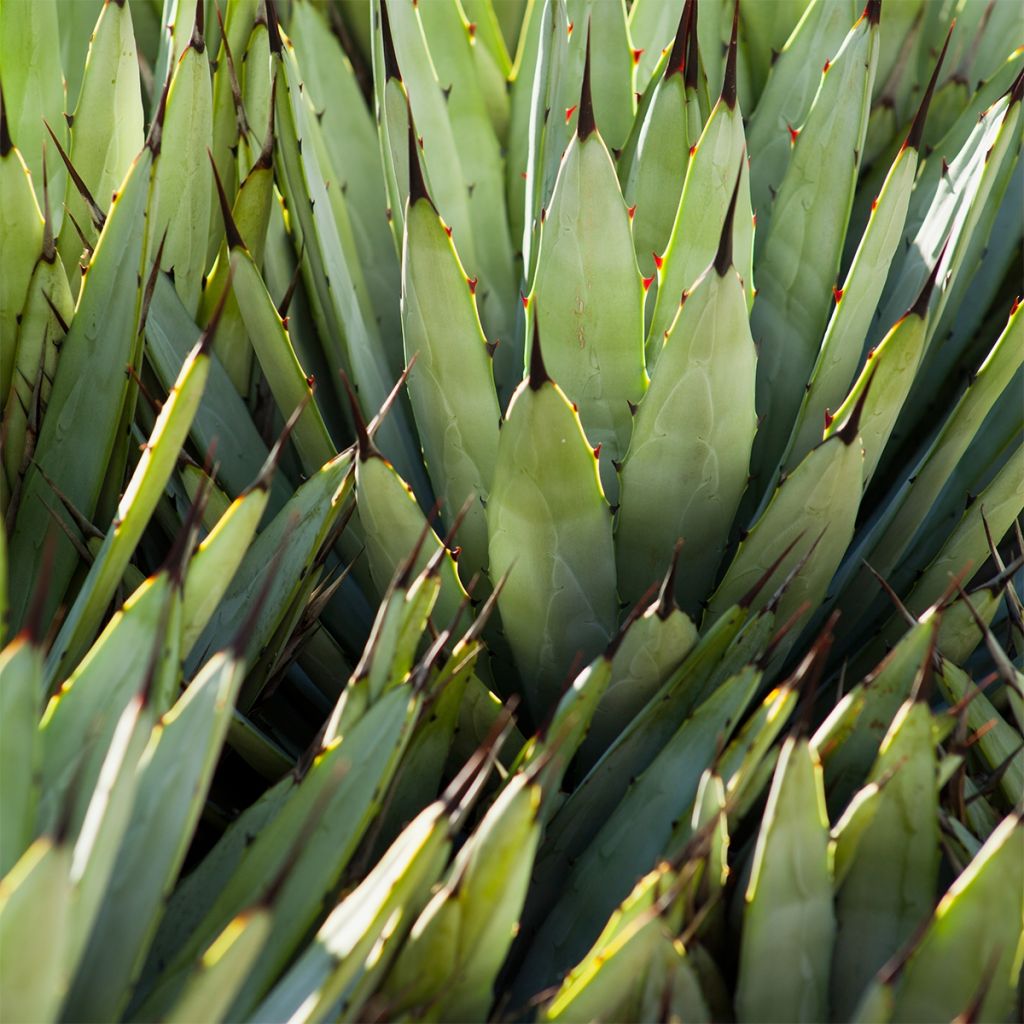

Agave macroacantha
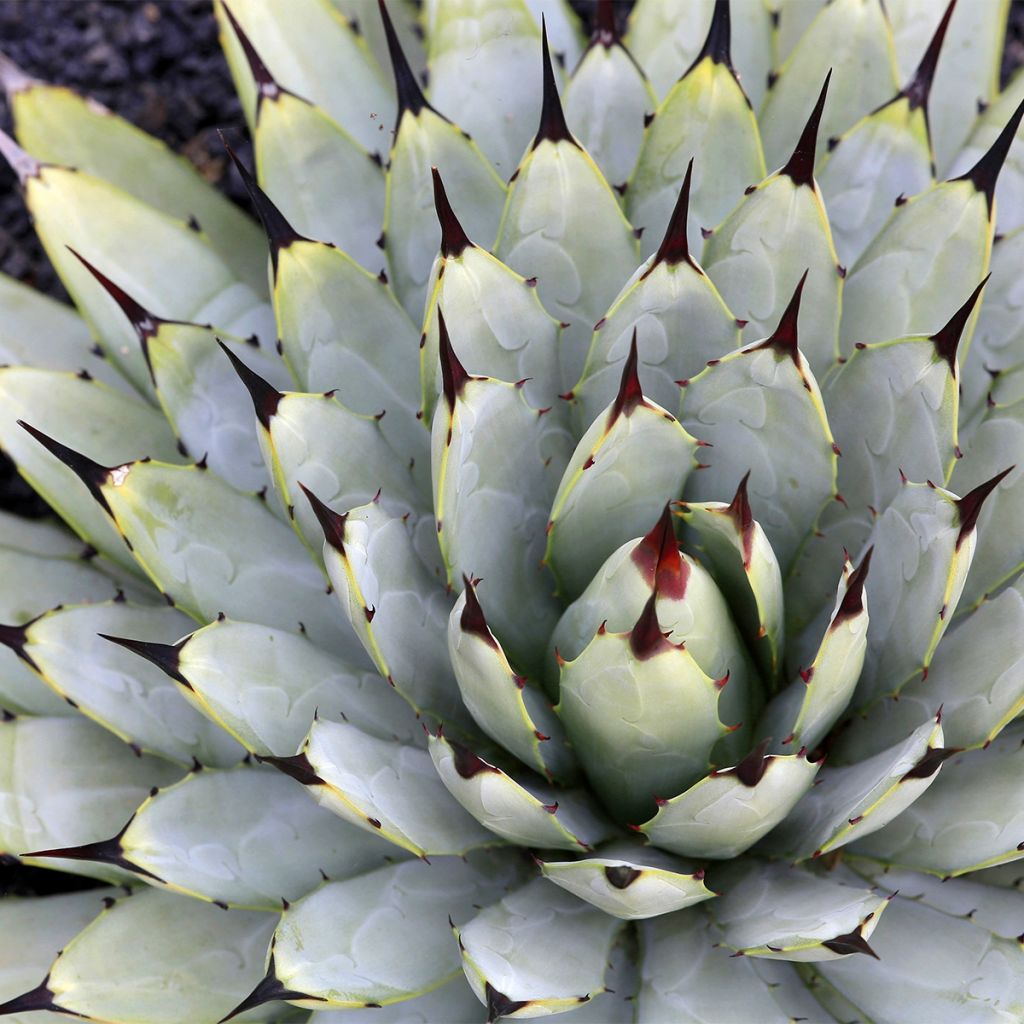

Agave macroacantha
Agave macroacantha
Agave macroacantha
Large-thorned agave
This item cannot be shipped to the selected country
Delivery charge from €5.90
More information
Schedule delivery date,
and select date in basket
This plant carries a 12 months recovery warranty
More information
We guarantee the quality of our plants for a full growing cycle, and will replace at our expense any plant that fails to recover under normal climatic and planting conditions.
From €5.90 for pickup delivery and €6.90 for home delivery
Express home delivery from €8.90.
Does this plant fit my garden?
Set up your Plantfit profile →
Description
Agave macroacantha is a rare Mexican species with a modest-sized rosette that develops a trunk over time, similar to some yuccas. Its rosette is characteristic, both in terms of its compact, radiating habit and its very bright blue colour with numerous black spines. It usually produces multiple suckers. It will thrive in a rock garden, with temperatures down to -5°C (23°F) without protection. Plant this agave with other succulents and exotic plants in a rocky landscape.
Agave macroacantha is found in a small location in northern Oaxaca, Mexico, an arid area in terms of climate and soil. This species belongs to the Asparagaceae family (formerly Agavaceae), just like yuccas and tuberoses. It is a succulent plant with rhizomes capable of producing numerous suckers, as well as a trunk that can reach up to 1m (3ft) in height after many years. This relatively slow-growing agave forms a dense rosette that reaches about 50cm (20in) in all directions. It is composed of numerous succulent, lanceolate, erect, stiff, linear, moderately thick leaves covered with a bloom. Each leaf has spaced and variously oriented marginal spines, ranging from bright red to black, just like the large 5cm (2in) spine at its tip. The intermediate leaves are sometimes slightly twisted into an S-shape. When a rosette reaches the age of reproduction, it produces a flowering stem with numerous branches. The branches bear flat, spherical panicles composed of numerous pale-yellow tubular flowers. The rosette, known as semelparous, dies after flowering, which lasts several months. This agave, which produces multiple small daughter rosettes from a young age, forms thick clumps that are particularly decorative.
In mild climates, Agave macroacantha will find its place in a large rock garden, a slope, or in a raised bed with soil enriched with gravel or coarse sand. It can be planted with other agaves, frost-resistant prickly pears such as Opuntia humifusa 'Millevaches', tall ferulas, hardy columnar cacti (Cleistocactus strausii, Cylindropuntia imbricata), and ground-covering plants like dwarf mugworts, all of which are equally undemanding. Gardeners in colder regions can grow it in a large pot on a terrace, choosing the most sheltered spot and in full sun to recreate a landscape inspired by faraway gardens.
Agave is also an edible plant, used in Mexico to make mescal, an alcoholic beverage obtained by fermenting its sugar-rich juice. It is also used in traditional medicine in Mexico, Brazil, and India for its supposed anti-fungal properties. The inflorescences are highly attractive to many pollinating insects.
Report an error about the product description
Agave macroacantha in pictures
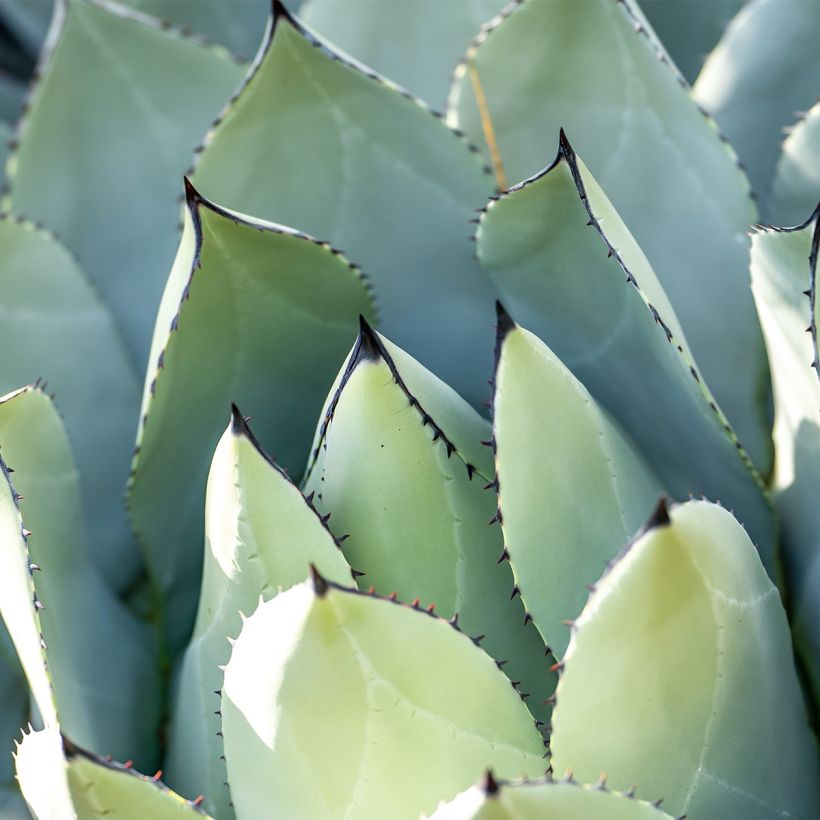

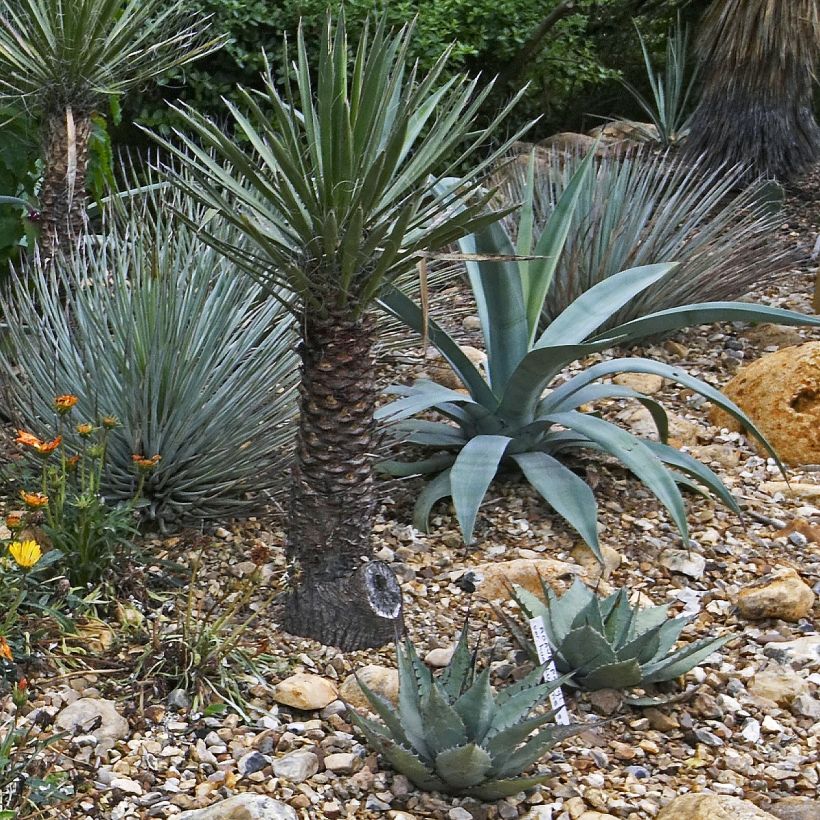

Flowering
Foliage
Plant habit
Botanical data
Agave
macroacantha
Agavaceae
Large-thorned agave
North America
Other Agave
Planting and care
Plant Agave macroacantha in full sun, in preferably poor soil that is well-drained. It will tolerate rocky, limestone, and sandy soil if it is well-drained. It fears winter humidity, especially when combined with frost, but tolerates perfectly dry soils in summer once well-rooted. It will withstand frosts down to about -6°C (21.2°F) without protection if the soil is dry.
In colder regions, it should be grown in a large, wide, and deep pot (preferably in terracotta) with drainage holes at the bottom. You can also grow it in a wooden container. It should be stored indoors or in a cold greenhouse during winter, protected from frost.
Planting period
Intended location
Care
This item has not been reviewed yet - be the first to leave a review about it.
Mediterranean perennials
Haven't found what you were looking for?
Hardiness is the lowest winter temperature a plant can endure without suffering serious damage or even dying. However, hardiness is affected by location (a sheltered area, such as a patio), protection (winter cover) and soil type (hardiness is improved by well-drained soil).

Photo Sharing Terms & Conditions
In order to encourage gardeners to interact and share their experiences, Promesse de fleurs offers various media enabling content to be uploaded onto its Site - in particular via the ‘Photo sharing’ module.
The User agrees to refrain from:
- Posting any content that is illegal, prejudicial, insulting, racist, inciteful to hatred, revisionist, contrary to public decency, that infringes on privacy or on the privacy rights of third parties, in particular the publicity rights of persons and goods, intellectual property rights, or the right to privacy.
- Submitting content on behalf of a third party;
- Impersonate the identity of a third party and/or publish any personal information about a third party;
In general, the User undertakes to refrain from any unethical behaviour.
All Content (in particular text, comments, files, images, photos, videos, creative works, etc.), which may be subject to property or intellectual property rights, image or other private rights, shall remain the property of the User, subject to the limited rights granted by the terms of the licence granted by Promesse de fleurs as stated below. Users are at liberty to publish or not to publish such Content on the Site, notably via the ‘Photo Sharing’ facility, and accept that this Content shall be made public and freely accessible, notably on the Internet.
Users further acknowledge, undertake to have ,and guarantee that they hold all necessary rights and permissions to publish such material on the Site, in particular with regard to the legislation in force pertaining to any privacy, property, intellectual property, image, or contractual rights, or rights of any other nature. By publishing such Content on the Site, Users acknowledge accepting full liability as publishers of the Content within the meaning of the law, and grant Promesse de fleurs, free of charge, an inclusive, worldwide licence for the said Content for the entire duration of its publication, including all reproduction, representation, up/downloading, displaying, performing, transmission, and storage rights.
Users also grant permission for their name to be linked to the Content and accept that this link may not always be made available.
By engaging in posting material, Users consent to their Content becoming automatically accessible on the Internet, in particular on other sites and/or blogs and/or web pages of the Promesse de fleurs site, including in particular social pages and the Promesse de fleurs catalogue.
Users may secure the removal of entrusted content free of charge by issuing a simple request via our contact form.
The flowering period indicated on our website applies to countries and regions located in USDA zone 8 (France, the United Kingdom, Ireland, the Netherlands, etc.)
It will vary according to where you live:
- In zones 9 to 10 (Italy, Spain, Greece, etc.), flowering will occur about 2 to 4 weeks earlier.
- In zones 6 to 7 (Germany, Poland, Slovenia, and lower mountainous regions), flowering will be delayed by 2 to 3 weeks.
- In zone 5 (Central Europe, Scandinavia), blooming will be delayed by 3 to 5 weeks.
In temperate climates, pruning of spring-flowering shrubs (forsythia, spireas, etc.) should be done just after flowering.
Pruning of summer-flowering shrubs (Indian Lilac, Perovskia, etc.) can be done in winter or spring.
In cold regions as well as with frost-sensitive plants, avoid pruning too early when severe frosts may still occur.
The planting period indicated on our website applies to countries and regions located in USDA zone 8 (France, United Kingdom, Ireland, Netherlands).
It will vary according to where you live:
- In Mediterranean zones (Marseille, Madrid, Milan, etc.), autumn and winter are the best planting periods.
- In continental zones (Strasbourg, Munich, Vienna, etc.), delay planting by 2 to 3 weeks in spring and bring it forward by 2 to 4 weeks in autumn.
- In mountainous regions (the Alps, Pyrenees, Carpathians, etc.), it is best to plant in late spring (May-June) or late summer (August-September).
The harvesting period indicated on our website applies to countries and regions in USDA zone 8 (France, England, Ireland, the Netherlands).
In colder areas (Scandinavia, Poland, Austria...) fruit and vegetable harvests are likely to be delayed by 3-4 weeks.
In warmer areas (Italy, Spain, Greece, etc.), harvesting will probably take place earlier, depending on weather conditions.
The sowing periods indicated on our website apply to countries and regions within USDA Zone 8 (France, UK, Ireland, Netherlands).
In colder areas (Scandinavia, Poland, Austria...), delay any outdoor sowing by 3-4 weeks, or sow under glass.
In warmer climes (Italy, Spain, Greece, etc.), bring outdoor sowing forward by a few weeks.

































